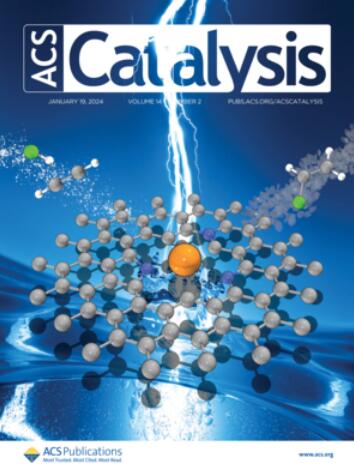Zirconium-Catalyzed Reductive Sulfonamidation of Amides and Its Application to Site-Selective N-Alkylation of Pharmaceuticals
IF 13.1
1区 化学
Q1 CHEMISTRY, PHYSICAL
引用次数: 0
Abstract
The direct catalytic reductive amination of amides remains a challenging transformation, particularly when using weakly nucleophilic amines. However, this strategy offers several synthetic advantages, particularly due to the wide availability of amides, as well as N-sulfonyl and N-sulfinyl amines. We present a mild catalytic approach for the monoalkylation of sulfonamides, sulfamates, sulfamides, and sulfinamides using amides. This protocol exploits the oxophilic character of zirconium, an early, earth-abundant metal, to drive dual reductive cycles and enable the critical amination step. This chemistry is carried out at room temperature using just 10 mol % of Cp2ZrCl2 in combination with hydrosilane reductant, yielding products in up to 94% isolated yield with excellent selectivity. This chemistry enables site-selective monoalkylation of sulfonamides, including examples of late-stage N-alkylation in pharmaceutical applications.

锆催化酰胺的还原磺化反应及其在药物选择性n烷基化反应中的应用
酰胺的直接催化还原胺化仍然是一个具有挑战性的转化,特别是当使用弱亲核胺。然而,这种策略提供了几个合成优势,特别是由于酰胺以及n -磺酰基和n -亚砜基胺的广泛可用性。我们提出了一种温和的催化方法,用于磺胺、磺胺酸盐、磺胺和亚砜酰胺的单烷基化。该方案利用锆的亲氧特性,一种早期的,地球上丰富的金属,驱动双重还原循环,使关键的胺化步骤。该化学反应在室温下进行,仅使用10mol %的Cp2ZrCl2与氢硅烷还原剂结合,产物的分离收率高达94%,具有优异的选择性。这种化学使磺胺的选择性单烷基化成为可能,包括后期n -烷基化在制药应用中的例子。
本文章由计算机程序翻译,如有差异,请以英文原文为准。
求助全文
约1分钟内获得全文
求助全文
来源期刊

ACS Catalysis
CHEMISTRY, PHYSICAL-
CiteScore
20.80
自引率
6.20%
发文量
1253
审稿时长
1.5 months
期刊介绍:
ACS Catalysis is an esteemed journal that publishes original research in the fields of heterogeneous catalysis, molecular catalysis, and biocatalysis. It offers broad coverage across diverse areas such as life sciences, organometallics and synthesis, photochemistry and electrochemistry, drug discovery and synthesis, materials science, environmental protection, polymer discovery and synthesis, and energy and fuels.
The scope of the journal is to showcase innovative work in various aspects of catalysis. This includes new reactions and novel synthetic approaches utilizing known catalysts, the discovery or modification of new catalysts, elucidation of catalytic mechanisms through cutting-edge investigations, practical enhancements of existing processes, as well as conceptual advances in the field. Contributions to ACS Catalysis can encompass both experimental and theoretical research focused on catalytic molecules, macromolecules, and materials that exhibit catalytic turnover.
 求助内容:
求助内容: 应助结果提醒方式:
应助结果提醒方式:


